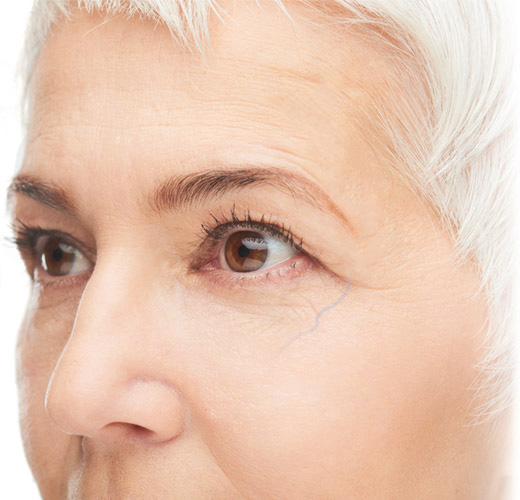Periorbital Veins
Periorbital veins (POV) are often a cause of cosmetic concern for patients. POVs are superficial veins that start at the bridge of the nose and stretch below or above the eye to join venous branches on the temples and scalp. Periorbital veins are often barely visible to the human eye but may be more visible for those with pale skin or as we age.

Can periorbital veins be a cause of discomfort?
Older patients or those with fair skin, may suffer from protruding and dilated periorbital veins around the eyes, temples, and forehead. Blue veins under the eyes or a bulging vein at the temple may be visible. Some people experience discomfort when the protruding periorbital veins are exposed to excessive heat, such as after a hot shower or during the midday sun.
New techniques are available to treat the condition without surgery
While some may not like the look of their protruding periorbital veins, they are generally asymptomatic and not the result of any underlying health condition. Despite this, some may want to remove the veins to improve their appearance. Treatment for periorbital veins in the past included micro-phlebectomy (surgical removal of the visible vein). Micro-phlebectomy involves having to puncture the skin around the eye to remove the vein. This is a very delicate procedure and can potentially lead to scarring. In addition, some veins may be too small to remove with surgery.
Not all treatments are effective at removing veins under the eyes
While laser ablation therapy has proved effective at removing small areas of blue veins on the face and nose, it is less effective at treating larger veins under the eyes. A more effective treatment for removing protruding periorbital veins in this area is direct vision sclerotherapy, also known as microsclerotherapy or standard sclerotherapy.
Sclerotherapy in Action
During treatment, the physician will inject multiple affected areas of skin. While this process may sound uncomfortable, most patients report little to no discomfort during the procedure. Sclerotherapy has been used to treat varicose veins for decades. Only tiny amounts of sclerosant are used, with any residual solution quickly diluted by the body, rendering it harmless. This non-invasive treatment involves an intradermal injection of a Sclerosant (Sodium Tetradecyl Sulphate or Polidocanol) into the affected veins. This causes the veins to collapse and harden, a process known as sclerosis. Once the veins have hardened, the body will absorb the degraded tissue over the next three to six weeks, leaving the skin blemish free. Dr Paraskevas prefers to use Polidocanol (Aethoxysklerol) for Periorbital Veins due to its lower potency and decreased tendency to cause inflammation in and around the treated vein.
What to expect
Learn all about your first appointment, what's included, and how much it will cost.
